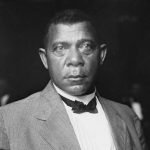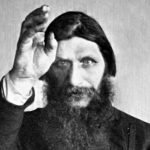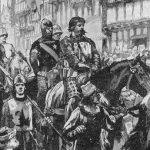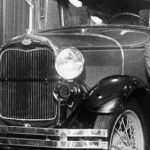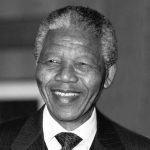In the beginning of the early days of cinema, there was a man by the name of Charlie Chaplin. A young man from England, Charlie Chaplin wanted to act; he greatly desired to be in front of the camera at all time. He would go on to create a persona that the entire world itself would fall in love with. Charlie Chaplin had a unique charisma about himself, able to capture the essence of the everyman, using his acting abilities to turn his emotions and feelings into a commanding physical presence. Indeed, Charlie Chaplin changed the world for film and became one of the most famous stars of the silent movie era to date. It has even been said that there has never been another actor as famous as Charlie Chaplin.
Charlie Chaplin was born and raised in the city of London in 1893. This time period was one of undue hardship on the young lad, for his father had died quite early, around the time that Charlie was 10, leaving the boy to fend for himself with his mother. This was a dark time for Charlie, as his mother had been committed to a sanitarium due to the fact that she had mental health problems attributed to a bad case of syphilis.
Recommended Reading
Diverse Threads in the History of the United States: The Life of Booker T. Washington
Who was Grigori Rasputin? The Story of the Mad Monk Who Dodged Death
FREEDOM! The Real Life and Death of Sir William Wallace
Charlie was left to fend for himself in that time, unable to find comfort with his mother due to the fact that she would never again fully be returned to a state of being able to care for the boy. He was forced to live in an orphanage and try to get what little schooling he could from a school for the poor.
Despite the rough situation that he had come from, his parents had given a beautiful gift to Charlie. They had both given him a love for acting. Charlie’s father had been a vocalist and his mother had been a singer and actress. They had passed a love for the stagecraft that had quickly infected the young Chaplin and left him desiring to be on the stage someday.
So, Charlie Chaplin began to perform and even from a young age, he was a hit. His charisma, energy and enthusiasm quickly captivated people in a variety of different stage plays and vaudeville shows. Eventually he was invited to tour across America with the Fred Karno Comedy Company, doing a vaudeville act where Charlie was quick to develop a hilarious character portraying a drunken fool. This vaudeville act was quick to garner the attention of many people and soon he was invited to do work on a film, taking in an excellent sum of money for the time period.
In December 1913, he joined the Keystone motion picture company in the hopes of being able to assist them in the creation of a film. It was here that he developed his classic slapstick character, known as The Tramp. Charlie Chaplin was most famous for his portrayal of the tramp, a comical man wearing a suit, with a short mustache a tall hat, baggy trousers and a cane. The tramp was nothing more than a goofy, comical individual with physical comedy oozing out. The tramp was a hobo more or less, a vagrant who dressed fancifully, acting as if he were a gentleman despite the fact that he was an impoverished buffoon. This character was so pivotal to the silent movie era due to the fact that it was a very physical role. Charlie Chaplin captured the imagination and the empathy of millions with this character, and would essentially go on to be one of the most legendary figures within the silent film era.
At Keystone, Charlie Chaplin also began to focus on learning how to direct film. In fact, he was regarded as somewhat of a perfectionist when it came to producing movies. Charlie Chaplin’s process of film creation was incredibly involved, as he spent most of his time focusing on creating organic scenes of comedy. He didn’t script out what he was doing, rather than create large scripts with many details, he focused merely on ideas for a scene. For example, he would have a scene known as “a man walks into a bar.: And that was it, those were the only notes on the scene. And then he would go about creating hundreds of takes; thousands if necessary. This process was extremely taxing on all those who were involved with the film, but Charlie Chaplin really didn’t care. He had a habit of being his own movie financer, giving him the luxury of putting as much time wanted to for each production. His films became extremely successful due to this process and he often enjoyed the financial benefits of his choices.
Charlie greatly believe in chemistry, and insisted that the entire cast and crew was to get along with one another. He firmly believed that cooperation was required in order to achieve great thing. If there wasn’t cooperation with specific actors, even if it was in the middle of a long shoot, Charlie Chaplin had no problem firing them and finding a new actor. This process indicated to many people that Charlie was committed to quality beyond that of a normal filmmaker. Perfection was his game and he wasn’t about to let anyone stop him from creating the perfect movie.
Many of his films captured the pathos of the Great Depression era. His character, The Tramp, was the perfect picture of the elegant down on his luck individual who had nobility and rejected the system around him. This struck a chord with most of America, especially those in the lower class. Not only did his work resound in the USA, he was also becoming a sensation across the rest of the world as well. By the age of 26 he was one of the highest paid actors in the world, mainly because his films were always selling.
READ MORE : What it means to be Working Class
In 1917, one of the film companies that he worked with, Mutual, amicably ended his contract. This led Charlie Chaplin to create his own studio so that he could finance all of his own films. With each release of a movie, his popularity only seemed to grow.
His personal life was somewhat tumultuous, however. He had been married once before, only to divorce his wife due to an unhappy marriage. Later on, he would have a secret affair with Lita Gray, one of his actresses and he impregnated her, sparking them to get married. This relationship was scandalous for the time period. Charlie Chaplin did not really care for the relationship and preferred to spend most of his time avoiding his wife by working at the studio. The reason that he had married her was because she had only been sixteen at the time of her pregnancy and he could’ve been charged with statutory rape if he hadn’t made the choice to tie the knot. The circumstances did not make for a healthy relationship and over time it became clear that they would not be able to reconcile their differences.
At the time of this emotional turmoil, he was busy working on The Circus, the first movie that would go on to win him an Academy Award. He despised his time working on such a film due to the fact that he was in horrible divorce with his wife, and regarded his brilliant film as nothing more than a loss because of the circumstances surrounding his life at the time.
READ MORE: History of Divorce Law in the USA
Latest Biographies
Queen Zenobia: The Charismatic Empress of Ancient Syria
Eleanor of Aquitaine: A Beautiful and Powerful Queen of France and England
Frida Kahlo Accident: How a Single Day Changed an Entire Life
Lite had gone after him for everything he was worth and her lawyers had made a point to hurl nasty accusations at Charlie, calling him a deviant and a pervert. In order to try to quell the amount of damage that she was doing to his reputation, he agreed to pay her a massive sum of money out of court, a sum of $600,000 which is one of the largest settlements for that era.
By 1931, there was now the capability for sounds to be in film. This was a major change for the rest of the entertainment industry, but Charlie Chaplin faced a significant challenge with speaking in a film. The challenge was due to the fact that Charlie Chaplin was a hard-core British actor with a British accent. His character, The Tramp, was an American. He knew the moment that The Tramp spoke, it would turn off his entire audience in the USA. So, he made the decision to continue creating his movies as silent films, without any spoken words.
Despite the fact that he made the decision to forgo spoken word, Charlie Chaplin also made the choice to start implementing his own composed music into his film. Believe it or not, Charlie Chaplin was a skilled musician from a very early age, and he was able to create music of his own for his own movies. He truly was one of the most artistically talented individuals to have ever existed, able to create music, comedy and direct unlike any other person on the planet.
Charlie Chaplin’s major shift in his career came about during the second world war. Charlie Chaplin had seen the rise of Nazi Germany and made the decision that he was going to do something about. He had seen a propaganda film created by the Germans, one that was meant to show the power of the Third Reich. Charlie Chaplin realized that the only way that he could combat Hitler was through mockery. And so, in 1940, Charlie Chaplin made the decision to release a movie known as The Great Dictator. The Great Dictator was Charlie Chaplin’s first full sound movie and it lampooned Hitler, making a mockery of the German state. Hitler was parodied heavily during this film and it was received with great enthusiasm across the board. Even Hitler had been reported to insist on watching the film twice, although that fact is up for dispute.
At the end of The Great Dictator, there is a famous monologue where Charlie Chaplin makes a plea to the audience to reject fascism and war. This began a shift in Charlie Chaplin’s work, where it became clear that Chaplin’s work would be ever increasingly political.
The public opinion on Charlie Chaplin began to sour somewhat during the 1950s. It was during this time that the Red Scare was at its height and many actors within Hollywood were being accused of being a communist sympathizer. Charlie Chaplin was unable to dodge those accusations. One of his own films, Modern Times, had been noted by J Edgar Hoover as having anti-capitalist beliefs. This caused Hoover to investigate into Chaplin and make accusations that Charlie was indeed a communist.
When Charlie Chaplin returned to America after a tour of Europe, he discovered that he was no longer welcome to live in the United States of America. This was a shock to him, as he had never once espoused a communist view. There was intense scrutiny on him and he was requested to make a case as to why he should be able to stay. Rather than choose to stay, however, Charlie made the decision to move to Switzerland, disavowing America and its political witch hunt.
Charlie Chaplin continued making films, but the reality was that most of his best work was behind him. He had begun to experiment with more tragic and darker movies; most of these films did not do terribly well with the rest of the world. His health also began to fail him as well during the 60s, as a small series of strokes began to take away his ability to function healthily and freely.
In 1972, shortly before his death, he was invited back to America to receive in an Honorary Award from the American Motion Picture Society. This honorary award was to acknowledge Charlie Chaplin for his many accomplishments within the film world. He returned to America and upon entering the Academy was given a 12-minute standing ovation by everyone there. He was excited and overjoyed for such a reception, and received his reward with dignity. Even though America had briefly turned its back on Charlie Chaplin, deep down in their hearts, they were truly grateful for the glorious gift of laughter that he had brought to the world.
Shortly thereafter, he was knighted by Queen Elizabeth despite the fact that he was unable to kneel due to his health. He took on the name of Sir Charlie Chaplin. In 1977, Charlie Chaplin died at the age of 88. He left behind eight children, two failed marriages and a monumental impact on the film industry. He did not simply shape film, he created how they were viewed. Charlie Chaplin was one of the most famous actors that the world will ever see and without his dedication to his craft, film just wouldn’t be the same.
READ MORE: Shirley Temple
Explore Other Biographies
America’s Favorite Little Darling: The Story of Shirley Temple
Fast Moving: Henry Ford’s Contributions to America
Catherine the Great: Brilliant, Inspirational, Ruthless
Queen Elizabeth Regina: The First, The Great, the Only
Queen Mary of Scots: A Tragedy Revisited
Stubborn sense of fairness: Nelson Mandela’s life-long struggle for peace and equality
References:
Charlie Chaplin’s Scandalous Life and Boundless Artistry: http://www.newyorker.com/culture/richard-brody/charlie-chaplins-scandalous-life-and-boundless-artistry
A Century Later, Why Does Chaplin Still Matter: http://www.avclub.com/article/century-later-why-does-chaplin-still-matter-205775
American Masters: Inside The Actor: http://www.pbs.org/wnet/americanmasters/charlie-chaplin-about-the-actor/77/
FBI Profile of Charlie Chaplin: https://vault.fbi.gov/charlie-chaplin
